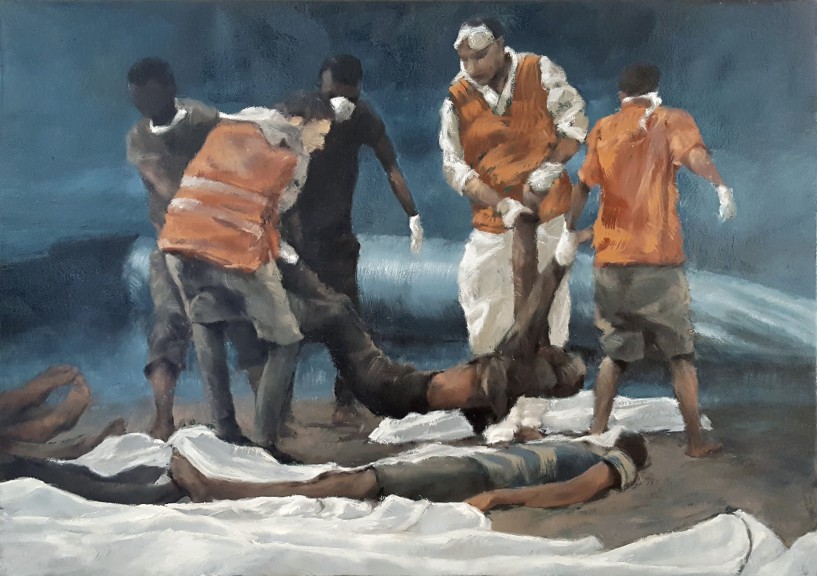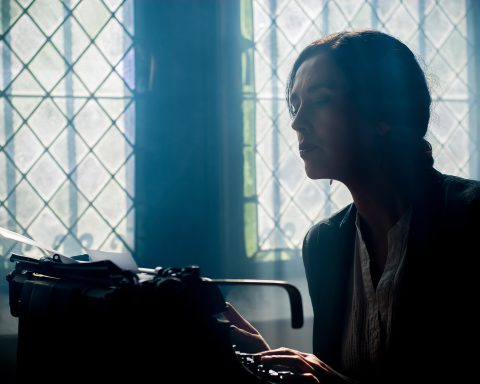She could well be one of the cult figures sitting in the first rows of fashion shows in Paris or New York. With her pale face, black clothes and huge hats, Amélie Nothomb is, however, a writer. And a good one at that. The Belgian author, who writes three books a year, but publishes only one of them, is internationally famous and interested not only in writing but also in political and social issues. A true intellectual, she has a troubled past. The memories of her childhood and youth are incorporated into many of her books, which are usually brief.

Below are my thoughts after reading two of Amélie Nothomb’s books in French. Looking for a book to read? Trying any of her many titles is a safe bet.
Stupeurs et tremblements (“Fear and Trembling”), 1999
In Stupeurs et tremblements Amélie Nothomb writes about the time she spent working for a big company in Japan. As the only European in the firm, she was under the impression that her superiors and colleagues would appreciate the fact that she spoke Japanese like a native. She had miscalculated the reaction of the locals and was in for big surprises and lots of trouble.
Suddenly she realized that a person she had almost come to adore was proving to be her enemy. This person would treat her as a rival and would burden her with the most difficult chores. But Amélie Nothomb was a tough spirit to crack. “I was the Sisyphus of accounting and like the mythical hero, I would never despair, I would begin the inexorable transactions for the hundredth time, for the thousandth time”.
As she observes her colleagues, she enumerates the many hard do’s and dont’s that dictate a woman’s life in Japan:
Your duty is to sacrifice yourself for the others. Meanwhile, don’t imagine that your sacrifice will make those to whom you will dedicate your sacrifice, happy. It will only allow them not to be ashamed of you. You have no chance to become happy nor to make anyone happy.
Une forme de vie (“Life Form”), 2010
In the book Une forme de vie, Amélie Nothomb talks of a special kind of art. Here again the autobiographical element is key. Also the issue of obesity plays a role in both books, but more so in the second one.
The author enumerates here the reasons for which she has always been such an ardent correspondent ever since her childhood. She explains how people approach her by sending her letters in which they just ask for her attention, or simply express their admiration or beg her to give them money and so on.
An American soldier in Iraq asks for her support, he is going through a dramatic situation. It is neither due to the horrors of war nor to his boredom at the place where he is stationed. His problem is related to his extra weight, due to the horrible food that he has to eat in the army. He has become obese and feels that he is carrying in his body a second person. The solider sees his imaginary companion as a female whom he calls Scheherazade. He thinks of her as his wife or lover:
Sometimes I tell myself that Scheherazade is one of the Iraqi women I killed without seeing them. I am not speaking metaphorically when I say that I carry the weight of my crime… I hate my presence here in Baghdad. But at the same time I don’t feel like going back to Baltimore. I haven’t told my family that I have gained more than 100 kilos, their reaction terrifies me. But I am unable to go on a diet. I don’t want to lose Scheherazade. If I lose weight, it will be like killing her a second time.
The writer is moved and gets interested in the way the soldier approaches his own issue. His overweight body is for him a form of resistance. He doesn’t want to lose weight. On the contrary. He will do whatever he can in order to keep his weight and increase it if possible. Nothomb agrees and urges him to go on with his original protest against his warmongering country. She suggests that he can present his effort as an art project in an installation at a Belgian gallery.
He accepts and sends her his photo.
The plot takes an unexpected turn. It brings to surface many subjects besides the effects of war and the meaning of correspondence and friendship. It remains to be seen how this special relationship between the soldier and the writer will develop…
My main impression is that Nothomb knows how to grasp her readers’ interest from the very first sentence. She also has a subtle humor that comes out even when she is tackling serious subjects. At times this takes a slightly surrealistic turn, which seems to be just a facade for her honesty.









